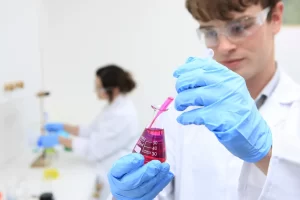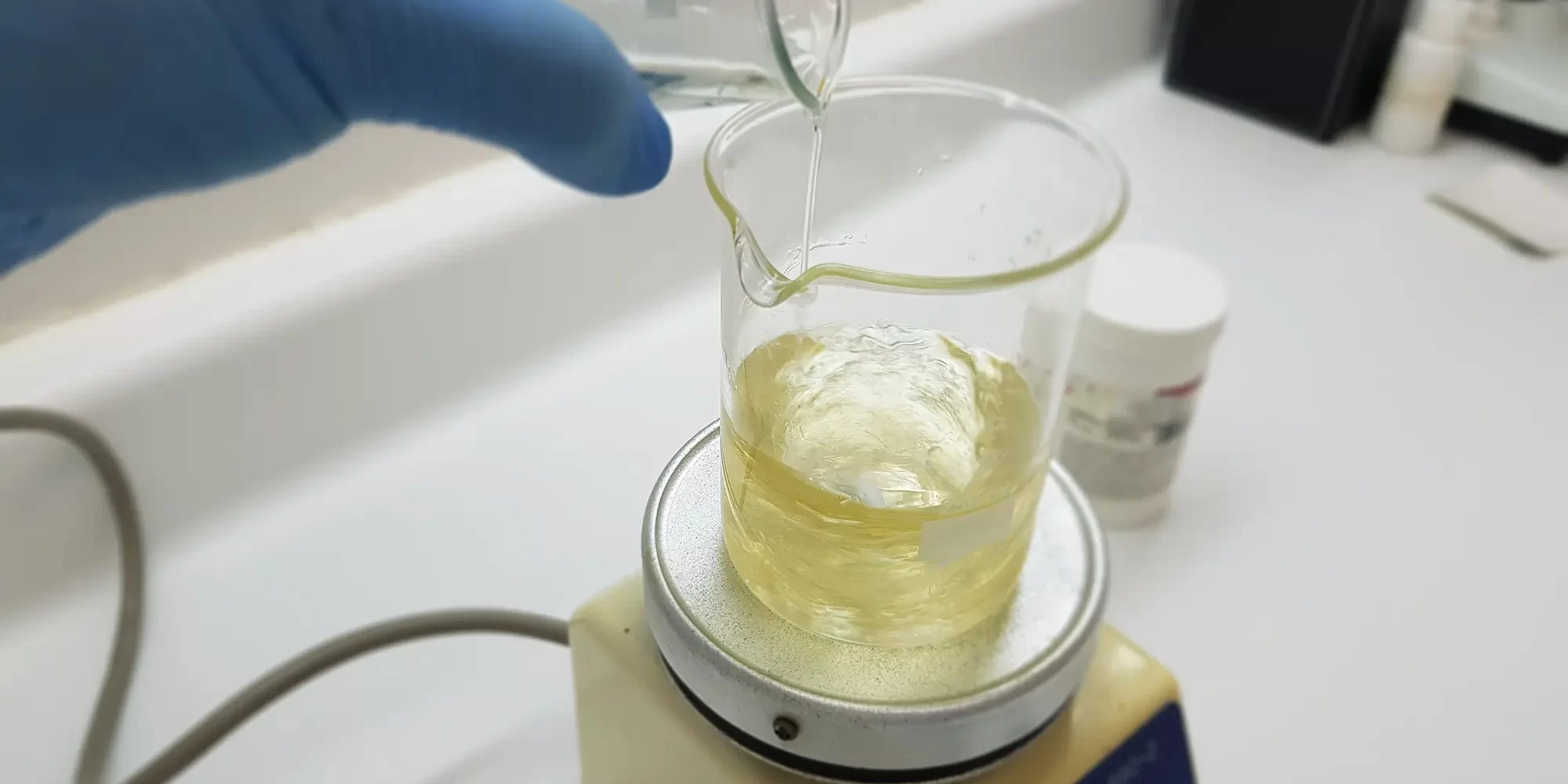Chlorine Dioxide (ClO₂) is a highly effective and versatile disinfectant, widely used across multiple industries for its superior oxidation properties.
Unlike traditional chlorine-based disinfectants, Chlorine Dioxide selectively targets harmful pathogens while leaving fewer harmful by-products.
This makes it an ideal solution for water treatment, food processing, healthcare, and industrial sanitation. In this article, we explore the science behind how Chlorine Dioxide works and why it has become a leading choice for disinfection.
How Chlorine Dioxide Works
 Chlorine Dioxide is a powerful oxidising agent that disrupts and eliminates harmful microorganisms through a unique chemical reaction. Unlike chlorine, which acts by chlorination, ClO₂ works through oxidation, making it more effective in destroying bacteria, viruses, fungi, and biofilm.
Chlorine Dioxide is a powerful oxidising agent that disrupts and eliminates harmful microorganisms through a unique chemical reaction. Unlike chlorine, which acts by chlorination, ClO₂ works through oxidation, making it more effective in destroying bacteria, viruses, fungi, and biofilm.
1. Oxidation at a Molecular Level
When Chlorine Dioxide comes into contact with a pathogen, it penetrates the cell wall and reacts with key amino acids, proteins, and lipids inside the microorganism. This oxidative reaction disrupts the pathogen’s metabolism, rendering it inactive and preventing reproduction.
2. Targeting Biofilm Formation
Biofilms are a significant problem in water systems, industrial pipelines, and healthcare environments. These protective layers of bacteria resist many conventional disinfectants. Chlorine Dioxide is one of the few disinfectants capable of fully penetrating biofilms, breaking them down and preventing their regrowth.
3. Effective Across a Wide pH Range
One of the major advantages of Chlorine Dioxide is its stability across a broad pH range (4-10). Traditional chlorine becomes less effective in alkaline conditions, whereas ClO₂ remains highly active, ensuring consistent disinfection performance.
4. Minimal Harmful By-Products
Unlike chlorine, which reacts with organic matter to form harmful by-products like trihalomethanes (THMs) and haloacetic acids (HAAs), Chlorine Dioxide breaks down into harmless substances such as chloride and chlorite. This makes it a safer choice for drinking water treatment and food processing.
Applications of Chlorine Dioxide in Various Industries
Due to its powerful disinfection properties, Chlorine Dioxide is widely used across multiple industries:
1. Water Treatment
Chlorine Dioxide is extensively used in municipal water treatment, industrial water systems, and wastewater management. Its ability to eliminate bacteria, viruses, algae, and biofilm ensures clean and safe drinking water while reducing maintenance costs for infrastructure.
2. Food and Beverage Industry
Food processors use Chlorine Dioxide to disinfect surfaces, pipelines, and processing equipment. It is also used to treat irrigation water, reducing microbial contamination in fresh produce. Its effectiveness against pathogens like Listeria and Salmonella makes it a preferred choice in food safety.
3. Healthcare Facilities
Hospitals and healthcare institutions rely on Chlorine Dioxide to disinfect water systems, medical equipment, and high-contact surfaces. It plays a key role in preventing hospital-acquired infections by eliminating waterborne bacteria like Legionella and Pseudomonas aeruginosa.
4. Industrial and Manufacturing Processes
Chlorine Dioxide is widely used in industrial settings, including pulp and paper bleaching, pharmaceutical manufacturing, and electronics production. Its non-corrosive nature makes it safe for use on sensitive equipment while maintaining high disinfection efficacy.
Chlorine Dioxide is a scientifically advanced disinfectant that offers superior microbial control, biofilm removal, and broad-spectrum oxidation. Its ability to work across various industries, while maintaining environmental safety, makes it a preferred choice over traditional chlorine treatments.
To learn more about how Chlorine Dioxide can enhance your disinfection processes, contact Scotmas today.






